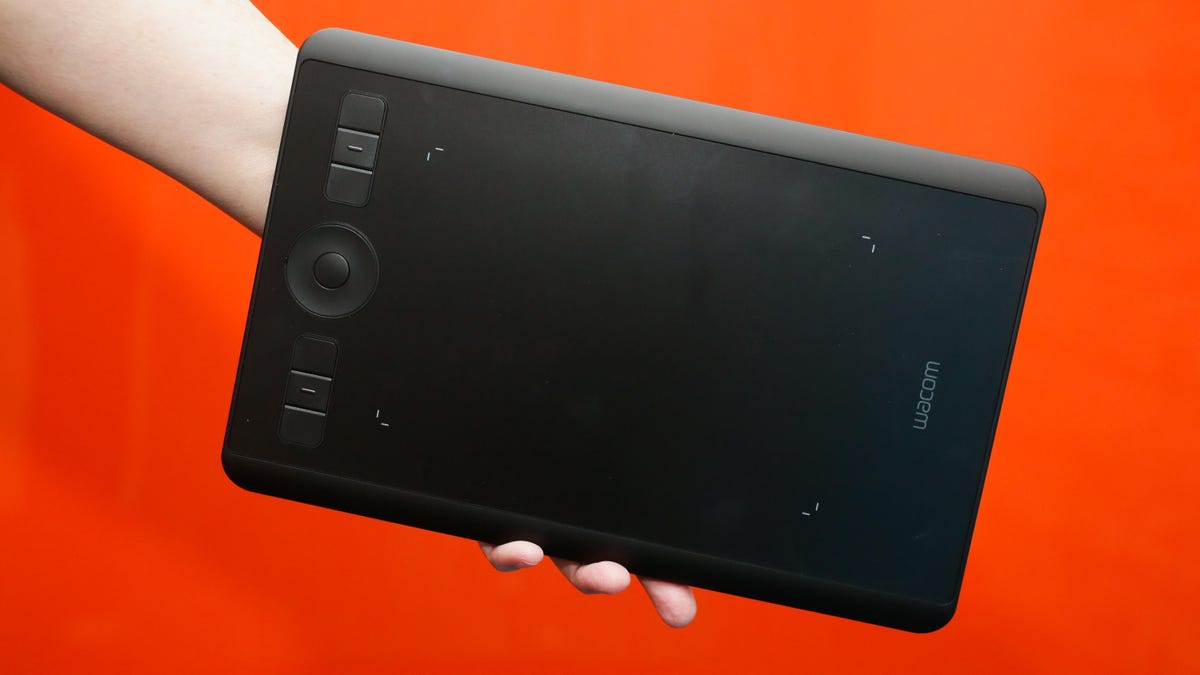Wacom's Intuos Pro tablet now comes in pint-size
The Intuos Pro Small is a more affordable version of Wacom's flagship graphics tablet.

The tablet itself is much bigger than the usable drawing area.
Two years in to the life cycle of the latest version of the Intuos Pro, a mainstay professional graphics tablet, Wacom has decided to bring out a small size. That means the entry price for the 8,192-levels-of-pressure Intuos Pro drops to $250 -- and going small isn't as much of a sacrifice as you might think.
As a tablet, it seems tiny but works identically to its medium and large siblings. While it seems like the smaller area wouldn't easily permit working on a large drawing or image, it does. And it requires less arm motion to travel from one side to the other. If you're a hand-dragger, though, you reach the edge of the tablet and fall off, which may not be comfortable for you -- there's not quite as much clearance as there is with the larger models.
In fact, in some ways the Intuos Pro Small is the optimal size for a lot of people. It's easy to slip in a bag with a laptop to carry around, and it weighs just under a pound (450g). It connects via USB-C or Bluetooth, and because of the size it's more suited for dual use as a touchpad as well. A really big touchpad with programmable keys.
The Intuos Pro Small relative to the size of the 2019 iPad Mini.
It's great for working in cramped spaces, too, where you can't dedicate the roughly 13x8.5 inches (338x219 mm) needed for the larger version; the small is just 10.6x6.7 inches (270x170 mm).
I do wish there were a way to adjust the amount of force that tapping requires, though; I randomly find myself whacking the tablet just to register a single click.
Of course it works with, and includes, the same battery-free Pro Pen 2 (and other Wacom Pen options), stand and replacement nibs you get with the larger model, but there's no Paper Edition, no replacement color rings to jazz up the Pen and you can't get texture sheets for it (which let you change the feel of the surface).
While the requirements on the box say it needs a USB-A port for wired operation, that's just because it ships with a USB-A to USB-C cable; I used it with a USB-C to USB-C cable and had no issues.
Though you can get a tablet or convertible laptop with pressure-sensitive stylus support, the small tablet remains relevant for several reasons. For one thing, only the Wacom devices offer 8K+ levels of pressure, 60 degrees of tilt and rotation support. Additionally, you don't get that frequently skittery, slippery feel of working on glass.
You might want to get the Small if you've been wanting a device with a stylus-compatible screen, but already have a clamshell laptop that you're not ready to replace. And, like the larger Intuos models, you can use it with a full desktop operating system -- Windows 10 or Mac OS -- so it would integrate better into your workflow than an iPad Pro, which uses iOS.
On the other hand, all of those power advantages add to the complexity of using it, and drawing on the Wacom while looking up at a screen doesn't feel as natural as drawing directly on the screen like you do with tablet.

